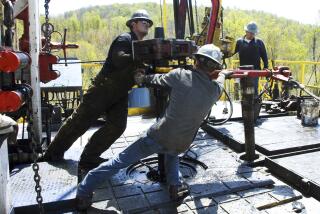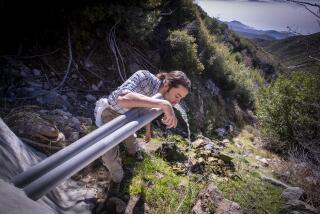Enbridge pipeline opponents lack national platform of Keystone XL
ANN ARBOR, Mich. — Katy Bodenmiller was worried about the proposed pipeline work near her house in Groveland Township, Mich., so she started looking for help.
She emailed U.S. Sen. Debbie Stabenow (D-Mich.) asking about the project being pushed by a Canadian pipeline company called Enbridge Inc., which spilled 20,000 barrels of tar sands oil in Michigan in 2010.
The email response from Stabenow’s office: A form letter about the proposed Keystone XL pipeline — a different pipeline project proposed by another company altogether,TransCanada Corp.
The next big oil pipeline battle is here, and hardly anybody knows about it.
“It saddens me to say that all evidence points to us being better informed about this project than our elected officials,” Bodenmiller said. “But that’s only because officials and the press, with a few exceptions, have failed to advocate for those they serve.”
A few weeks after she received the form letter -- and after The Times asked Stabenow’s office for comment -- a staffer called to apologize for the mix-up, Bodenmiller said.
Alberta-based Enbridge is moving forward with $8.8-billion worth of plans to greatly expand its U.S. pipeline network to pump more oil through nearly a dozen states.
That work includes the construction of two new pipelines from Illinois and Texas and the expansion of a line running through Bodenmiller’s property in Michigan that will move 500,000 barrels per day through the state once completed.
A somewhat similar effort by TransCanada to build an 830,000-barrel-per-day pipeline extension from Canada to the Texas coast — called Keystone XL — met national opposition from landowners, politicians and environmentalists. Their pressure put part of the project on hold because of a federal approval process managed by the State Department that allows the U.S. government to deny pipeline projects.
That hasn’t happened to Enbridge, even though one of the company’s proposed pipeline projects would take 850,000 barrels per day from Oklahoma to the Texas coast. A nuance in federal law allows Enbridge to improve its pipelines inside the U.S. as long as the work doesn’t cross the Canadian border, meaning the State Department does not have to approve.
Enbridge is moving forward at the local and state level without the same friction faced by its competitor with Keystone XL, and expects to complete most of its projects by 2014. Local environmentalists and residents, worried about Enbridge’s safety record and requests to work on their land, have begun opposing Enbridge’s projects on their own.
Ernest “Junior” Hamilton, a 69-year-old Holly, Mich., resident, told The Times that Enbridge offered him $7,000 for pipeline work that would tear up his yard, remove all his trees, pass over his drinking well and ruin his septic system.
Hamilton refused to cooperate and now has a court date to determine whether the company could exercise eminent domain and take his land to do its work.
“If the judge says, ‘OK, you can take his property,’ it’s done,” Hamilton said. “I just paid it off last year. Paid on it for 30 years, and now a judge can say [to Enbridge], ‘Oh, you can have it because you feel the need.’ ”
Hamilton added, “Hopefully it will get somebody else’s attention, what they’re doing. Because it isn’t just me living out in the sticks.”
The company says it has followed all the rules, contacting landowners to notify them and negotiating to secure the necessary property easements.
Now environmental groups are discovering the limitations they face in opposing Enbridge’s projects state by state and county by county. In contrast, the Keystone XL battle provided a national platform.
Activists with the Indiana environmental group Save the Dunes said Enbridge was avoiding their request to hold a state-level meeting with residents and environmental groups about pipeline work in Indiana’s three northwest counties.
“Up to this point, we believe that the public has not been adequately informed of the project [in Indiana], and Enbridge has so far declined our request for a public meeting of state, federal and local regulators and concerned citizens,” Nathan Pavlovic, a land and advocacy specialist for the group, told The Times in an email.
An Enbridge spokesman said the company had already held an open house with local residents and offered to meet privately with Save the Dunes about the project.
“We work with the landowners one on one and we did offer to meet with them, but they turned us down for whatever reason, so I can’t really say anything beyond that,” Joe Martucci, an Enbridge project spokesman, told The Times.
Opposition to Enbridge’s work is not uniform, largely because of the piece-by-piece nature of the pipeline upgrades. Attorneys in Illinois have filed briefs opposing the proposal for new work there, but Enbridge hasn’t filed similar paperwork in Missouri yet, so substantial opposition there doesn’t really exist.
“If it gets to the next level of seriousness, then we will mobilize,” John Hickey, Missouri chapter director for the Sierra Club, said of the proposed project through Missouri. “I know there’s a map out there, there’s been some noises, but at this point we’re in the waiting period and keeping our eyes on whether it becomes a serious thing.”
He shouldn’t expect much support from Missouri state officials, at least at this point. Democratic Gov. Jay Nixon, facing reelection this November, has heartily greeted Enbridge’s proposed $2.8-billion Flanagan South pipeline project and the estimated 1,100 temporary construction jobs that could come with it.
When asked about the oversight Missouri officials planned for the Enbridge project, Nixon’s office declined to comment. A spokesman for the Missouri Public Services Commission, the state permitting authority, seemed confused about the fact that the commission held the responsibility for granting Enbridge powers of eminent domain to build the new line.
Back in Michigan, Okemos-based attorney Gary L. Field is building a case against Enbridge’s work by claiming that the company doesn’t have the right to exercise eminent domain under state law.
“They’re not a public utility, they’re not a public pipeline, they don’t serve the public good,” Field told The Times. “They’re a private company taking private property.”
Martucci, the Enbridge spokesman, said the company was trying to answer the ravenous U.S. demand for Canadian oil. Enbridge is just acting as “the middleman” as an oil carrier, he said.
“We don’t own the oil, we don’t buy the oil, we don’t drill the oil, we don’t sell the oil,” he said. “We’re responding to the market.”
ALSO:
Keystone rival Enbridge avoids scrutiny of pipeline plans
Could John Lennon’s killer be paroled at his 7th hearing?
Louisiana shootout suspects may be linked to extremist groups
More to Read
Sign up for Essential California
The most important California stories and recommendations in your inbox every morning.
You may occasionally receive promotional content from the Los Angeles Times.











